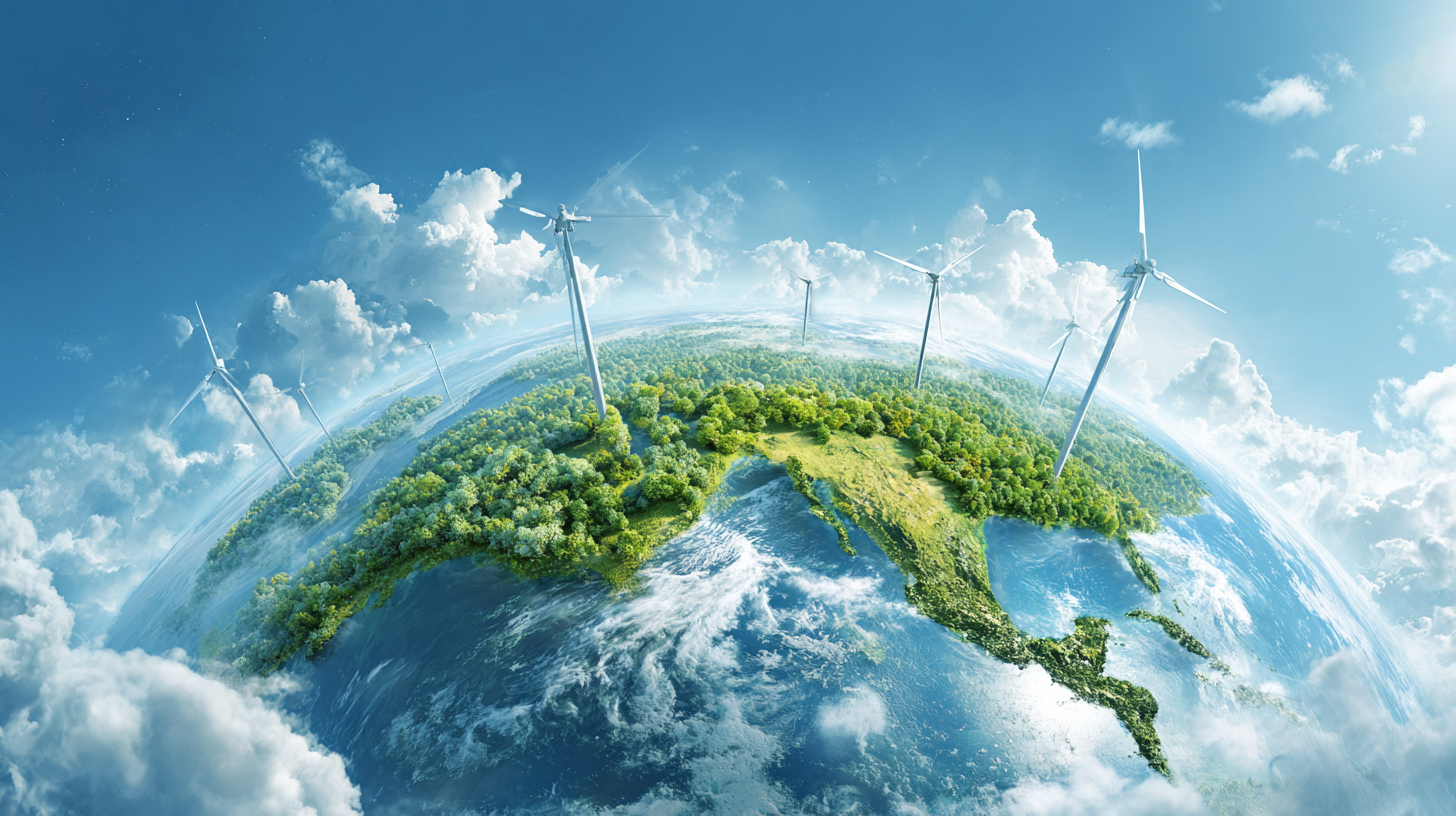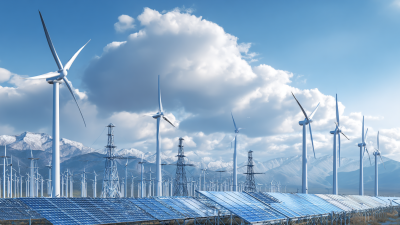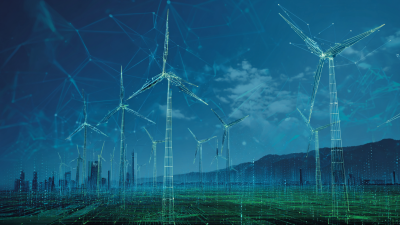Unlocking the Future: Innovative Energy Solutions and Sustainable Sources for Tomorrow
In the quest for a sustainable future, the significance of innovative energy solutions and diverse sources of energy cannot be overstated. According to the International Renewable Energy Agency (IRENA), renewable energy accounted for over 29% of global electricity generation in 2020, highlighting a substantial shift towards cleaner alternatives. With projections indicating that renewables could supply 86% of global electricity by 2050, the imperative to adopt and develop advanced energy technologies has never been more critical. This transition not only addresses the pressing challenges of climate change but also promises to enhance energy security and economic resilience. Implementing 'digital+Best' strategies, industries can leverage cutting-edge technologies such as IoT, AI, and blockchain to optimize energy management, leading to more efficient and sustainable energy consumption, thus redefining our approach to energy and sources of energy for the generations to come.

Identifying Renewable Energy Technologies for a Sustainable Tomorrow
The transition to renewable energy technologies is critical for forging a sustainable future. According to the International Renewable Energy Agency (IRENA), the global renewable energy capacity is expected to double by 2030, driven by advancements in solar, wind, and sustainable biomass. In particular, solar power continues to dominate, with projections indicating that it may account for up to 30% of the total electricity generation by 2030. With innovations in storage technologies and smart grid systems, renewable energy is becoming more accessible and reliable for consumers and businesses alike.
To ensure you are supporting renewable energy initiatives, consider these tips: First, invest in energy-efficient appliances and dedicated solar panels for your home, which can significantly reduce your carbon footprint. Secondly, stay informed about local renewable energy programs or incentives that may be available in your area, which could provide financial benefits while promoting sustainability. Lastly, advocate for policies that support the development and integration of renewable technologies, helping to drive a transformation in energy systems worldwide.
Research from the Global Wind Energy Council (GWEC) reveals that the wind energy sector could create over 3 million jobs globally by 2030, contributing to economic growth while combating climate change. As companies and governments shift their focus towards cleaner energy sources, it is vital that we harness these innovative technologies to pave the way for a sustainable tomorrow.
Unlocking the Future: Innovative Energy Solutions and Sustainable Sources for Tomorrow
| Renewable Energy Technology | Current Efficiency (%) | CO2 Emissions (g/kWh) | Estimated Cost (USD/kWh) | Potential Global Capacity (GW) |
|---|---|---|---|---|
| Solar Photovoltaics | 15-20 | 40 | 0.05 | 6000 |
| Wind Energy | 35-45 | 11 | 0.04 | 1500 |
| Hydropower | 35-45 | 3 | 0.03 | 1200 |
| Geothermal | 10-20 | 5 | 0.01 | 200 |
| Biomass | 20-30 | 120 | 0.07 | 500 |
Exploring Solar and Wind Solutions: Harnessing Nature's Power
As the world confronts the challenges of climate change and dwindling fossil fuel resources, exploring solar and wind solutions has become essential. These renewable energy sources harness the power of nature, converting sunlight and wind into clean electricity. By adopting these technologies, we not only reduce our carbon footprint but also promote a sustainable energy future for generations to come.
Tip: When considering solar energy, evaluate your home's sunlight exposure and roof orientation. Installing solar panels in areas that receive the most sunlight can significantly increase energy efficiency. Additionally, look for government incentives and rebates that can make the investment more affordable.
Wind energy, on the other hand, offers an impressive solution for larger installations. Whether it's a community wind farm or a personal turbine, the potential for generating clean energy is substantial. Wind power is particularly beneficial in regions with consistent breezes, where it can complement solar power in producing energy year-round.
Tip: Before investing in wind energy, consult with experts to assess the average wind speed and potential energy output in your area. Also, consider joining a community solar or wind project, which can be an economical way to contribute to renewable energy without the high upfront costs.
Integrating Energy Efficiency into Daily Life: Practical Tips for Consumers
Energy efficiency is increasingly important for consumers looking to reduce their carbon footprint while saving on utility bills. Implementing simple changes in daily life can lead to substantial improvements in energy use. For instance, switching to LED bulbs, using energy-efficient appliances, and regularly checking for air leaks can significantly lower energy consumption. These straightforward changes not only benefit the environment but also contribute to long-term financial savings.
Moreover, integrating smart technology into homes can enhance energy efficiency even further. Smart thermostats allow users to optimize heating and cooling schedules based on their routines, ensuring that energy is not wasted. Additionally, utilizing power strips that can be turned off easily helps eliminate phantom loads from electronics that continue to draw power when not in use. By adopting these practical tips, consumers can play a crucial role in fostering a more sustainable future while enjoying the immediate benefits of reduced energy costs.
Innovative Energy Solutions and Sustainable Sources
Innovative Storage Solutions: Maximizing Energy Use with Batteries
The future of energy storage is rapidly evolving, driven by innovative solutions designed to maximize efficiency and sustainability. Recent advancements in battery technology, particularly in the context of electric vehicles, showcase a collaborative effort to reduce charging costs and enhance the use of decarbonized energy sources. Partnerships between energy firms are crucial, as they aim to integrate various energy supply architectures, facilitating a more robust and resilient energy landscape.

Significant strides are being made in the integration of energy storage systems within artificial intelligence data centers. These advanced systems are not only ensuring reliable power availability but are also contributing to cost reductions and promoting sustainable operational practices. The development of next-generation energy solutions, including hybrid electrolysis and combustion systems, paves the way for a symbiotic relationship between hydrogen production and energy storage, leading to more effective smart grid interactions. These innovations underline the vital role of energy storage in transitioning to a greener, more efficient energy network.
Collaboration Between Sectors: Building a Sustainable Energy Future Together
The transition to a sustainable energy future hinges on robust collaboration across various sectors, including public, private, and non-profit organizations. By pooling resources, knowledge, and technological advancements, these sectors can create innovative solutions that not only address immediate energy needs but also promote environmental stewardship. For instance, partnerships between renewable energy companies and local governments can lead to the development of community-based solar projects, providing clean energy while fostering local economic growth.
Moreover, cross-sector collaboration can drive research and development of cutting-edge technologies essential for sustainable energy. Universities and research institutions, working alongside private sectors, can pioneer breakthroughs in energy storage, smart grid technology, and energy efficiency measures. This synergy enhances the capacity to tackle complex challenges such as energy security and climate change. Ultimately, by fostering a collaborative ecosystem, society can unlock a future where inclusive and sustainable energy solutions thrive, benefiting both people and the planet.

Related Posts
-

Exploring Sustainable Energy Innovations at 2025 China 138th Canton Fair
-

Exploring Alternative Energy Innovations at the 138th Canton Fair 2025: A Data-Driven Insight
-

Revolutionizing Energy Solutions: Innovative Approaches for a Sustainable Future
-

What is Energy Solutions and How They Impact Global Sustainability Efforts
-

Wind Farm Energy Innovations at 2025 China Import and Export Fair: Harnessing a $1 Trillion Industry
-

Harnessing Smart Grid Energy Innovations at the 2025 China Import and Export Fair

